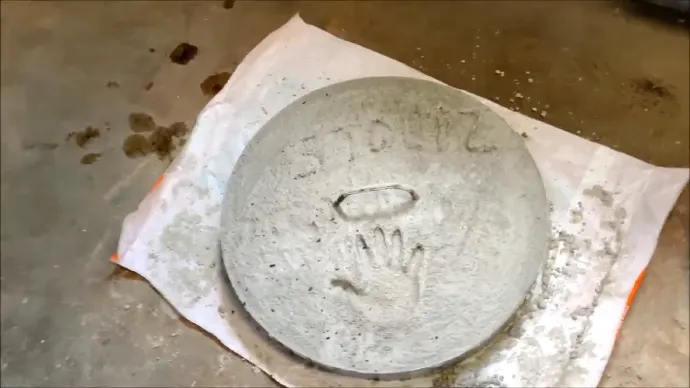Septic tanks are often overlooked but essential for properties not connected to a municipal sewage system. Not only do they safely dispose of wastewater, but they also require careful maintenance to prevent disasters. One often overlooked maintenance aspect is ensuring the tank lid is securely sealed.
Properly sealing a concrete septic tank lid is important, which involves preparing the septic tank first and sealing the riser to the tank using a high-quality sealant. Once this is done, the next crucial step is securely placing the riser lid. This is essential for those who want to take extra sealing measures.
Do you want to make your concrete septic tank last longer and work better? We’ve got you covered with our easy-to-follow guide on sealing the lid and keeping it maintained.
How to Seal a Concrete Septic Tank Lid: Step By Step
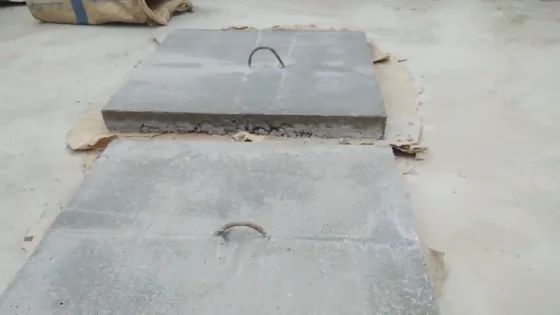
Sealing a concrete septic tank lid requires following several essential steps. Let’s explore them now:
Step One: Prepare the Septic Tank
Before beginning, ensure the proper closure of a crucial waste management system. A thorough inspection and cleaning of the area around the access point is necessary. Ensure that the septic tank lid is free of debris or dirt before sealing it.
Inspect the lid and the riser for any cracks or damages that may have occurred over time. Before attempting to seal the lid, you will need to repair or replace any damaged parts.
Step Two: Seal the riser to the septic tank
Applying patch mix or concrete around the riser’s base will assist in sealing it to the septic tank. You should apply the mixture evenly and smoothly between the riser and tank to ensure a good bond. A trowel can level and smooth out the patch mix or concrete, ensuring it adheres properly to the tank’s surface.
After applying the patch mix or concrete, it is important to check for any gaps between the riser and the tank. If there are any gaps, they may require filling with Bentonite or casing sealer to prevent leaks.
After filling the gaps, the riser needs to completely dry and cure before moving on to the next step of securing the riser lid.
Step Three: Secure the Riser Lid
Installing the septic system involves placing the cover over the access point and fastening it securely to the structure to prevent safety hazards. Aligning the lid properly and screwing it in tightly are vital points. This will prevent any unwanted debris or animals from entering the septic tank.
Additionally, a properly secured lid will prevent any accidents, as it will prevent individuals from falling into the tank.
Step Four: Additional Sealing (Optional)
Apart from securing the riser lid in the previous step, an additional layer of sealant is around the edges of the riser where it meets the top of the tank. This can help create a waterproof seal between the riser and the tank.
This extra sealing step is optional but highly recommended to prevent any potential leaks in the future. It is advisable to apply a heavy bead of tar or butyl sealant around the edges of the riser to create a tight connection. It ensures no gaps or cracks will allow water or other materials to penetrate.
Step Five: Finishing Touches
Putting the septic system in place and ensuring it works long-term requires backfilling the surrounding area with soil. Please ensure the backfill material is free of rocks, debris, and any other sharp objects that may damage the septic tank or its components.
Compact the soil in layers to prevent settling and unevenness and slope away from the septic tank to prevent water accumulation. Keeping the concrete septic tank lid covered is essential to avoid any potential health hazards.
Does It Make Sense to Leave The Lid Of a Septic Tank Uncovered?
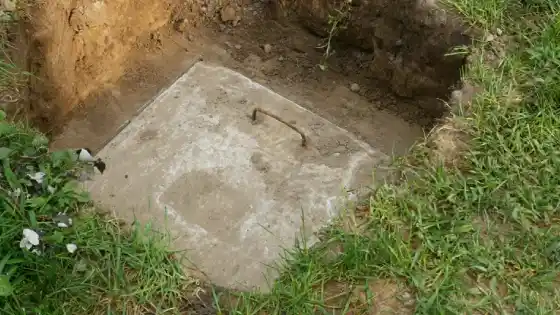
Septic tanks are designed to be watertight, and leaving the lid uncovered can compromise its integrity. Additionally, uncovered tanks can attract small animals or children who may unknowingly fall into the tank, leading to serious or even fatal injuries.
To prevent unwanted access to the septic tank, ensure that the lid is always closed and secured. Immediately replace broken or deteriorating lids to prevent safety hazards.
Regular maintenance and inspection of the septic tank can help identify and address any potential issues before they become a safety risk.
How dangerous is it to leave a septic tank lid uncovered?
Leaving a septic tank lid uncovered poses several safety hazards that should not be overlooked. The following are some of the most common risks:
ONE: Safety hazards
An exposed septic system opening poses a serious safety risk, as both humans and animals are susceptible to injury by accidental falls. Also, it is possible to suffer serious injuries or even death from an unattended, uncovered septic tank.
Children and pets are particularly susceptible to falling into an uncovered septic tank, which can cause them harm or even result in death. Even adults can accidentally fall into an uncovered septic tank, especially when vegetation obscures the opening.
Therefore, it is crucial to seal the concrete septic tank lid to prevent such incidents from happening.
TWO: Risk of Contamination
Animals, insects, and rodents can easily enter open septic tanks, causing blockage and spreading bacteria and contaminants. The septic tank may accumulate debris, which can also cause blockage and lead to the spread of bacteria.
When the septic tank is left unsealed, the risk of contamination increases, potentially leading to serious health hazards for those in the surrounding area. It is important to take measures to prevent contamination by sealing the concrete septic tank lid.
THREE: Freezing Issues
Securing a septic system’s opening prevents contaminants from entering the surrounding environment, but freezing issues may occur. In cold climates, septic tank lids without being properly sealed can lead to freezing. This can cause damage to the septic system, including blocked pipes and other problems.
Pipes connecting the tank to the drain field can freeze, leading to serious problems for the septic system. Insulating pipes in the basement and keeping the septic tank lid properly sealed is important to prevent freezing issues.
How to Maintain a Septic Tank Lid to Prevent a Disaster?
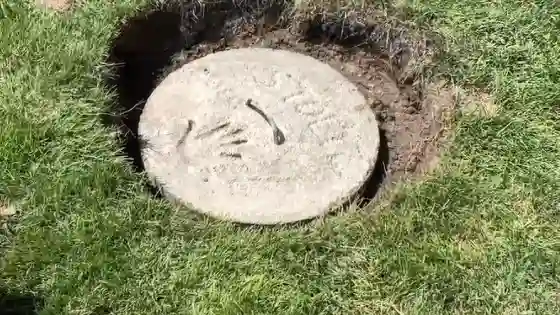
Maintaining the protective cover of underground waste disposal systems is crucial to preventing damage and ensuring safety. Regularly inspect septic tank lids for cracks, rust, or any other type of damage that could compromise the structural integrity of the lid.
If you find any damage, replace it or repair it immediately to prevent further damage.
It is also essential to ensure that the lids fit tightly to prevent leaks and that bolts, screws, or locks help to secure them. Furthermore, it is important to avoid driving or parking vehicles on septic systems and never leave an open lid unattended.
Educating children about septic tank lid safety can also help prevent accidents. By following these guidelines, homeowners can maintain their septic tank lids and prevent potential disasters from occurring.
Do septic tanks always have two lids?
It’s common to see two lids on top of a septic tank, but it’s only sometimes the case. Multiple variations exist, including septic tanks with only one lid and those with three or more lids.
The number of access points on a septic system often depends on the tank’s size and the household’s specific needs.
The number and location of access points are critical when maintaining and inspecting a septic tank. Without proper access, identifying potential problems or performing routine maintenance becomes difficult.
Homeowners should take the time to familiarize themselves with the layout of their septic system, including access points and their locations. This knowledge will help ensure that the septic system remains in good working order and can prevent environmental hazards caused by septic system failures.
Does it make sense to cover the septic tank lid with something heavy?
Maintaining a septic system’s functionality and preventing environmental hazards requires proper coverage of access points. Avoid using heavy covers when sealing the lid of a concrete septic tank, as they may damage the tank and hinder maintenance and inspection.
Temporary, movable materials such as mulch, pea gravel, or removable bricks provide better coverage options. These materials will not easily come off, which can damage the tank.
Choosing lightweight materials that seal the lid without posing a risk to the septic system is essential. Ultimately, proper coverage ensures proper functionality and avoids potential environmental hazards.
How heavy is a concrete lid for a septic tank?
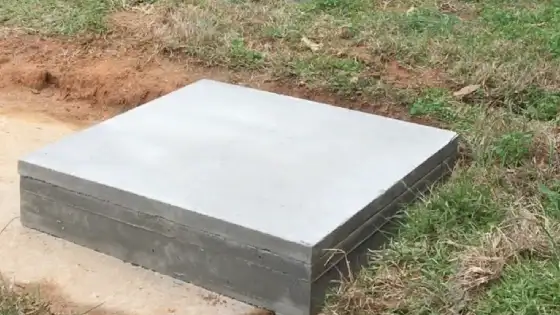
Septic tank covers can be quite heavy, which can make regular maintenance difficult. The old-style concrete covers can weigh 60 to 80 pounds, and the tank riser rings can weigh hundreds of pounds, adding to the overall weight.
Furthermore, the lid’s weight can present a safety risk and cause damage to the tank if it’s improperly attached. This can lead to costly repairs.
As a result, modern septic tank covers weigh less than 10 pounds, making maintenance much easier and safer for homeowners. These lightweight covers enable homeowners to inspect and maintain their septic tank without worrying about injury or damage to the tank.
Neglecting Septic Tank Cover Can Spell Disaster
We often overlook the small details of our homes that can ultimately lead to disaster if improperly maintained. An example of such a feature is the concrete lid of the septic tank. Although seemingly insignificant, its function is paramount in ensuring our sterile and hygienic environment.
Ensuring the lid is clean and free of any cracks or leaks helps prevent soil and water contamination, contributing to a safer and healthier environment. It is also essential to avoid using heavy objects to cover the lid that could damage it or make maintenance difficult.
Take your time with your safety and the environment, and make sure your concrete septic tank lid is sealed properly with the right safety measures.
